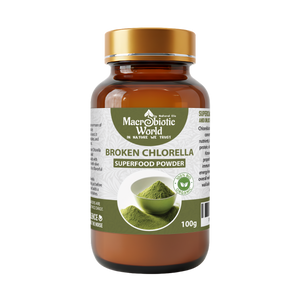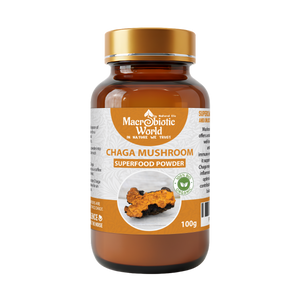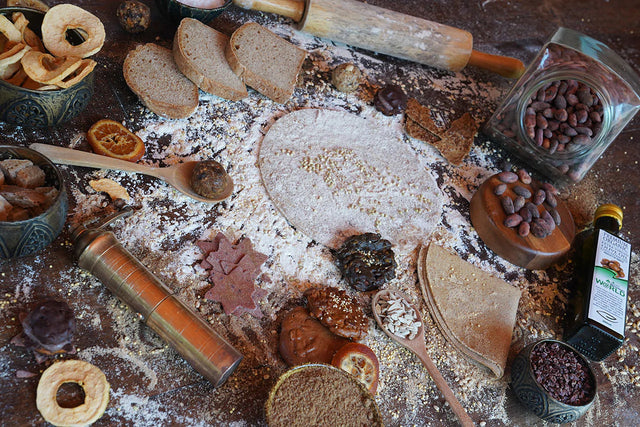Natural Efe | Libido Night & Maca Collection

Libido or Aphrodisiac ?
We receive many requests for supplements to enhance sexual energy for both men and women, mainly through our online channel.
In each case, we need to respond by asking to clarify if it is Libido or Aphrodisiac the purpose, in general people try known aphrodisiacs to boost Libido and the opposite is also true.
Actually, both are effective in most cases, the third component usually not mentioned is Sexual Drive which can also be improved.
To make a long story short we have been researching through hundreds maybe more than a thousand good scientific, medical, and folklore sources to understand the results of their research, and to make sure there is no commercial funding or influence but rather the science, ethnological, legendary, traditional, and indigenous myths and stories about the subject.
As a result, we made a list of what we found to be true and effective in almost one hundred percent of cases either used for fun or for seriously needed therapy.
First, we list such supplements for Men as their wish for physical improvements are more common than women's.
Despite the fact that women's sexual and reproductive organs are much more complex and the number of problems it can develop is threefold higher than men's, about 36 against 9, men are seeking all kinds of energy boosters much more..
The first in the list is a Natural Plant that comes from the Andes High Lands in Peru and Bolivia (7000 meters altitude), actually, a rare and magnificent root plant called MACA.
One of the impressive phenomena we detected while researching was the absolute unanimous response by everyone who left a comment about "Maca" on internet social media, by the thousands, only positive and encouraging comments.
I guess this is unheard of. Rarely we see only approval to any product, also usually, we usually hear that there is no "Scientific" proof of claims made on most health products from natural sources that have not undergone pharmaceutical processing.
That is correct, but it is undeniable that compared or even better sometimes than scientific proof is the word of mouth by repeated by people through centuries, generation to generation up to this day, on top there are accounts on the improvement on sperm count and quality which brought healthy new members to the family in cases where there were no successful results. This same effect is what led ancient LLama and Alpaca herd carers to notice that by eating the roots they became stronger and produced more offsprings.
Here now we will start the LIBIDO SERIES, we are selecting confirmed and traditional plant, root and seed sources you can trust, we try it ourselves first....
-----------------------------------------------------------------------------

|
 |
 |
 |

|
Maca
The transition of maca from neglect to market prominence lessons for improving uses strategies for important legendary minor crops.
Michael Hermann is a senior scientist at Bioversity International, posted in Montreal, Canada. His recent work focuses on approaches involving high-value product differentiation to enhance the use of agrobiodiversity, with the ultimate goal of linking poor farmers (and keepers of much agricultural diversity) to markets for income generation. (Email:
m.hermann@cgiar.org)
Thomas Bernet has worked for several years at the International Potato Center (CIP) in Lima, Peru, where he has conducted methodological research on how to link small-scale farmers to markets.
Since 2006, he has been a consultant for marketing concept and market chain development, especially in the context of underutilized pro-poor crops.
(Email: t.bernet@cgiar.org)
Both authors have lived and worked in Lima, Peru, Michael Hermann from
1988 to 1990 and from 1997 to 2004 and Thomas Bernet from 1997 to the present.
The authors have consumed "Maca", and traveled on several occasions to Junin to witness maca production, trading, processing, and local consumption
Maca has a high nutritional density as determined by Dini et al. (1994).
Dried roots, as obtained through the traditional procedures described
in Section 3.2., contain about 10% water, 55–65% highly digestible
carbohydrates, 2.2% lipids, 10–13% protein, and 8.5% bre. Maca
seems to be particularly rich in iron, calcium, copper, zinc and
potassium (Dini et al.1994, Canales et al. 2000).
The maca protein is high in essential amino acids, with serine, arginine, phenylalanine,
valine, isoleucine, leucine, and lysine, each occurring at contents of50–150 mg/g protein
(Dini et al. 1994).
The main fatty acids include linoleic, linolenic, palmitic, and oleic acid (Dini et al. 1994, Ganzera et al. 2002) as well as the polyunsaturated acids and their amides, the macaenes and macamides (Zheng et al. 2000, Ganzera et al. 2002,
Muhammed et al. 2002). Ganzera et al. (2002) described the rst HPLCmethod suitable for the qualitative and quantitative determination of the main macamides and macaenes in maca and also a standardization protocol for these compounds.
Locher (2006) based on a review of Dini et al. (1994) and Zheng et al.(2000) lists as the main secondary metabolites of maca: glucosinolates, flavonoids, steroids, benzyl alcamides and essential oil Sitosterol (45.5%) appears to be the main component of the sterol fraction, followed by campesterol (27.3%), erosterol (13.6%), brassicasterol (9.1%), Δ7.22-ergostadienol (4.5%), stigmasterol and beta-sistosterol.
Maca contains high concentrations of aromatic glucosinolates (benzyl and p-methoxybenzyl glucosinolates in particular) and their derivatives, the isothiocyanates (Johns 1981), which are the compounds responsible for the pungent flavor of raw maca (Li et al.2001). The absolute content of glucosinolates in fresh maca roots is higher than in other crops of the Brassicaceae (Li et al. 2001).
Li et al. (2001) isolated from the tissue of maca roots the glucosinolates, benzyl glucosinolates (glucotropaoeline) and p-methoxy-benzyl glucosides.
The transition of maca from neglect to market prominence lessons for improving uses strategies for important legendary minor crops.
Maca has been highly regarded for centuries as a miracle food so it’s no surprise it has become a recent addition to the “must have” nutrient list for smoothies. Although it’s part of the broccoli, radish, and watercress family and even looks like a very robust radish, it has an earthy taste with a nutty flavor, making it a perfect complement to smoothies. Like the rest of the roots in the cruciferous family, it’s low in calories – one teaspoon of maca powder has only 10 calories.
Native to the Andes Mountains, maca is the superfood of one of the oldest, and once most advanced civilizations on earth – the Incas and Peruvians. Over the centuries maca has been called “magic, the food of the gods, a natural Viagra, and a miracle drug” for a reason. It works. For centuries people have been using it for everything from enhancing their fertility to boosting their immune system or libido, but most people simply love the non-caffeinated burst of energy they get from putting maca in their smoothies.
Most people report a subtle, but noticeable, non-jittery type energy boost within minutes to hours from adding just one teaspoon into their smoothie.
It’s not because it’s magical, but because of the root’s very real and very scientific makeup and how it affects everything from circulation to the endocrine system. To date there are no known toxic side effects from using maca. As a matter of fact, scientists say that repeated use of maca is like repeatedly exercising – the body not only adapts, but also gets stronger over time each time you use it.
While maca does have side effects they aren’t toxic. High doses are considered to have a relaxing effect on the heart, rather than a tension creating effect like caffeine. High doses can also increase fertility in men and women and may disrupt some forms of birth control, although researchers aren’t sure about this. Maca can also cause more frequent menstruation in some women, although women report it’s also helped with the hot flashes and problems women who are menopausal or pre or post-menopausal experience.
If you do take high does it’s important to make sure you get plenty of water. While taking the recommended dose can increase your energy, high doses can sometimes cause fatigue due to dehydration and heightened potassium levels.
Because the benefits are noticeable immediately, and because they accumulate over time with regular use, maca helps re-enforce the benefits of a healthy smoothie habit. As powerful as the results of taking maca can be, it’s not a drug. It’s a plant. Maca contains over 55 beneficial and naturally occurring phyto-chemicals (plant chemicals). Those chemicals play critical roles in the hormonal health of our body, including affecting our thyroid gland, immune system, reproduction system and brain.
Health Benefits of Maca
Just one teaspoon in your smoothie once or twice a day can do amazing things. Here are just a few of the things you can expect maca in your smoothie to help with:
Energy: Most people feel their mood and energy level lift almost instantly. Users report their energy, stamina and endurance.
Sex Drive: Maca has been shown to increase not only the male sex drive, but the production of sperm as well.
Fertility: Maca increases fertility in both men and women.
Migraines: If you suffer from migraine headaches you might want to try maca. Because most migraines are related to an imbalance in hormone levels, or fluctuating hormone levels, maca works by leveling out those levels. Maca doesn’t create any hormones in the body – it just helps the body produce them more consistently and effectively. It helps balance the body’s production of estrogen and progesterone. Maca also helps restore balance to the hypothalamus and pituitary glands – the body’s master gland system.
Memory: Maca enhances memory as well as our ability to learn and process mentally. It makes us more alert and aware.
Wounds: Maca speeds wound healing and benefits the circulatory system as well.
Vitamin packed: Maca includes 55 phyto-chemicals, including vitamins B1, B2, B12, and Vitamin C, zinc. It has amino acids, calcium and phosphorus as well.
Immune Booster: Maca’s 22 fatty acids function both as a fungicide and as a local antiseptic. These actions, along with the natural Vitamin C and zinc are believed to help aid in overall immunity enhancement.
Stress: For people with adrenal stress from work, disease, exercise or PTSD, maca can reduce the effects of cortisol on the adrenal glands and other organs so impacted by a “Type A”, high pressure lifestyle or job. Athletes, executives and anyone with an active life will appreciate how maca helps address the destructive actions of mental, emotional and physical stress on the body. Maca can help lower high blood pressure and how the body burns and utilizes food.
Thyroid: The Thyroid gland controls the rate at which the body produces energy from nutrients. Maca contains an alkaloid extract which activates the body’s natural calcitonine hormones, which regulate the metabolism of calcium (Ca) and phosphorus (P) in the blood. The hormone is secreted by the thyroid and the parathyroid. It acts in the intestines, bones, and kidneys to increase the (Ca2+) in the plasma. It also aids in wound healing through blood clotting. (Dr. Chacon — Peru)
Pancreas: Maca also boosts the work your pancreas does in keeping your blood sugar levels even. The pancreas is a vital part of the digestive process. If the duct from the pancreas become blocked for some reason the digestive fluids of the pancreas may digest the pancreas itself, or lead to pancreatitis, or pancreatic cancer.
Thymus: Your thymus is the organ responsible for the health of your immune system. It produces the T-cells that fight off infection and disease, especially important if you are getting treatment for HIV, AIDS or cancer. Maca contains vitamin C as well as trace elements of zinc. Researchers found out years ago that C and zinc, when taken together, help boost the immune system function of the thymus gland. Part of maca’s adaptogenic value may be its ability to enhance the thymus’ cell mediated immunity.
Definitions
You’ll often hear various terms, such as “phyto-chemical”, or “adaptogen” used when describing Maca. Here is a list of the most common terms and what they mean:
Phyto-chemical – Phyto means “plant,” and “phyto-genisis” is the study of plants and “phyto-chemical” is the study of the chemical compounds that occur naturally in plants. For instance, the substance that gives blueberries their dark blue color is a phyto-chemical. Scientists generally use the term to refer to those plant chemicals that may have a biological significance, but are not yet established as essential nutrients.
Adaptogen – An adaptogen is a new class of metabolic regulators (such as maca) which increase the ability of an organism (people or animals) to adapt to environmental factors (stress, diet, toxins, disease etc) and to avoid damage from such factors without causing any side effects from its use. Ginseng, a very popular root herb around the world, is another example of an adaptogen. The concept and name is accepted and used among mainstream researchers as well as many medical professionals.
FAQ
No one blog post or website can answer every conceivable question about maca, but here are some of the most frequently asked questions people have about maca:
How long will it last?
Maca will keep up to a year if kept in a cool, dry, dark place, but like most supplements and herbs, fresher is better and more potent. Use it within a few months of ordering if you’re using it at home. If you’re adding it to smoothies at a smoothie bar, chances are it’s very fresh since it’s something most smoothie bars go through quickly since it’s in high demand.
Is it a liquid, powder, tablet, gelatin or capsule and which is best to use?
Maca comes as all of the above, and it’s recommended that you use whatever form best suits you and your life style and preferences. Powder or liquid forms are best if using it in a smoothie. If you use a preferred method (liquid for instance) over a recommended method (powder) you’re more likely to take it consistently. It only works when you take it, so use a form you’re most likely to be comfortable with taking over time. Consider things like taste and how you plan to take it. Many people like to put it in a smoothie; others prefer to dissolve it in water, while others like to take it in pill or capsule form. People react to different forms differently. Some people feel no difference on the liquid and respond well to the powder. It’s up to the individual. The price may vary as well – with powders being less expensive than liquid for instance.
What is the difference between cooked, raw, and gelatinized maca?
In Peru, maca root is traditionally cooked before it is used. Peruvians roast maca roots or boil and mash them like potatoes. One benefit to using cooked maca is that it is easier to digest than the raw root. If you try raw maca and find it upsets your stomach, you can find a supplement or powder that comes from cooked maca. Another option if raw maca irritates your stomach is the gelatinized form. The process of gelatinizing maca uses low heat and pressure to separate out the fibrous parts of the root. This makes the maca more digestible.
Is there a difference between raw and organic?
Yes, depending on the supplier there is a difference, notably in the way it is handled. Organic doesn’t necessarily mean raw. Some manufacturers lightly heat their maca, and cooking, even slightly, means the maca is not raw. If raw is important to you, ask your supplier or smoothie bar owner about their maca. Lightly heating it makes it easier for some people to digest, but does not impact the potency of the root.
What does it taste like?
Different people say different things about the taste, and raw maca tastes different than dried but in general, maca has an earthy taste that is mildly nutty with a hint of butterscotch. It’s easily blended into superfood smoothies, various milks, chocolates, or mixed into flour for dessert recipes and doesn’t have a strong taste when combined with other foods or liquids. Although people in Peru and some restaurants do cook with maca bread, soups etc. Maca is used as a tea, as a spice, in yogurt, chocolate bars and as a supplement.
How often should I take it?
Just as with any exercise, herb, supplement or product, it’s wise to cycle, or take some time off from time to time so your body doesn’t become so used to it that the benefits lapse. Typical schedules vary. You may want to take it for a week then take a week off. Or you can do a month on, a month off and so on. Listen to your body and follow a schedule that works best for you! If you’re asking if you can have a couple of smoothies a day, the answer is probably, depending on how much you put in the smoothie and how your body responds to it. If you find yourself staying awake, unable to sleep, or feeling very alert, you might want to cut back.
Maca Smoothie Recipes
It’s been my experience that maca goes well is just about every smoothie imaginable. Many of the smoothie recipes posted on this site recommend using maca as an add-on for all the benefits listed above.
As with any new smoothie ingredient, vitamin, or supplement, start out with a smaller dose and work your way up. One teaspoon of maca is a good starting point, but you can easily work your way up to 2 tablespoons per smoothie.
For a smoothie where maca is the main ingredient, check out this Maca Superfood Smoothie Recipe
Rather than face the now-proven risks of hormone replacement therapy (HRT), an estimated six million women may now be searching for other options to help relieve menopausal symptoms. One option that is likely to become more familiar to women and their practitioners is the Peruvian herb maca. Maca is a cruciferous root vegetable that when freshly harvested resembles a small turnip. Maca has been used as both a food and medicine for thousands of years by native people from the Andes Mountains.
The search for safer alternatives to HRT intensified after reports were issued by the National Institutes of Health (NIH), indicating that the use of combination estrogen/progestin drugs in healthy menopausal women increases the risk of invasive breast cancer, heart disease, stroke, and blood clots, outweighing the drugs’ possible health benefits. NIH stopped a large-scale clinical trial and recommended the 16,000 participants stop taking the estrogen/progestin drugs immediately.
New York-based anthropologist Viana Muller, Ph.D., has been making collecting/study trips to Peru since 1989, exploring both the rainforest and Andes Mountains in search of effective herbal remedies unknown to North Americans. According to Dr. Muller, women who are stopping HRT may want to explore using maca root extract with one of the growing number of holistic medical doctors and other healthcare practitioners who are familiar with herbal medicine.
Says Dr. Muller, “Maca has been used successfully by native people of Peru for hormonal imbalances, menstrual irregularities, fertility, and menopausal symptoms, including hot flashes, vaginal dryness, loss of energy, libido and depression.”
Since introducing maca to medical doctors practicing CAM (Complementary/Alternative Medicine) at the Anti-Aging Medical Conference 1997, Dr. Muller has seen a dramatic increase in the use of this medicinal herb by holistic practitioners in the U.S.
Research has shown that maca contains no plant hormones, unlike soy/genistein and black cohosh. Instead, its action relies on plant sterols, which act as chemical triggers to help the body itself produce a higher level of hormones appropriate to the age and gender of the person taking it. Clinical case studies have shown that maca can be effective for premenstrual syndrome (PMS), as well as menopausal symptoms, and may help symptoms of hypothyroidism as well.
Alan Warshowsky, M.D., is an ob-gyn who serves as Director of Women’s Health at the Continuum Center for Health and Healing at Beth Israel Hospital in New York. Says Dr. Warshowsky: "At least 50 percent of my menopausal patients are using maca and doing well.
Karen Paris, a Physician’s Assistant of the Atkins Center in New York, the clinic founded by famed weight loss expert Robert Atkins, M.D., has said that the clinic began using organic maca root extract last year, finding it effective for their menopausal patients.
Says Paris, "We have had great success using maca in conjunction with some nutritional supplements, to wean women off of hormone replacement therapy. Some of them have been on HRT for many years. For the few women who still have some symptoms, we have developed a combination protocol that works very well, involving maca extract and a tiny amount of natural estrogen together with natural progesterone--which unlike progestin, is not carcinogenic."
Cynthia Watson, M.D., a Santa Monica physician specializing in women’s health, integrated the use of maca into her approach to menopausal symptoms six years ago. Says Dr. Watson, " I give my patients a choice--either natural hormones which are made to be bioidentical to human estrogen and progesterone or maca extract." In her opinion both approaches are equally successful. "The ones who have chosen to go with maca extract are doing phenomenally well," she added.
Dr. Muller recommends that any woman considering use of maca for menopausal symptoms do their own research. Says Dr. Muller, "If they have never used any hormone replacement, they can start using organic maca extract on their own without encountering any special problems. But if they have osteoporosis or if they have been on HRT for more than a few months, they are definitely going to need the guidance of health care practitioners who have integrated herbal therapies into their medical practice and are informed about available alternatives to prescription drugs for effective relief of menopausal symptoms."
She also feels that in order to evaluate the effectiveness of any natural therapy for the maintenance of bone strength or to help reverse osteoporosis, women need to work with practitioners who can order tests to establish base line hormone levels before starting the maca therapy, and follow up two months later with a second series of hormone tests to find out if the dose the patient is taking is sufficient.
"Even more accurate a measure of bone protection," says Dr. Muller, “is to do a base line and follow up bone resorption test to establish the rate at which calcium is being excreted into the urine. That avoids the problem of ‘false positives’ that women may get when taking phytoestrogenic herbs."
-----------------------------------------------------------------------------------------------------
Source :
1. https://www.womenlivingnaturally.com/articlepage.php?id=120
2. https://positivechoice.org/maca-what-is-it-and-why-would-you-want-to-eat-it/
3. https://goop.com/wellness/health/gp-unpacks-perimenopause-hormone-remedies-with-sara-gottfried-m-d/
4. https://yurielkaim.com/8-maca-benefits/
5. https://hormonesbalance.com/articles/the-10-hormone-balancing-wonders-of-maca/
6. https://www.karger.com/Article/Abstract/367795







erectile herbal supplements https://canadaerectiledysfunctionpills.com/ top erectile dysfunction products
dapoxetine prescription usa dapoxetine hydrochloride
canadian pills pharmacy https://canadapillstorex.com/ canadian pills pharmacy
strep throat wikipedia https://zithromaxes.com/ a zithromax
how to administer transurethral alprostadil https://alprostadildrugs.com/ aprostadil
Leave a comment